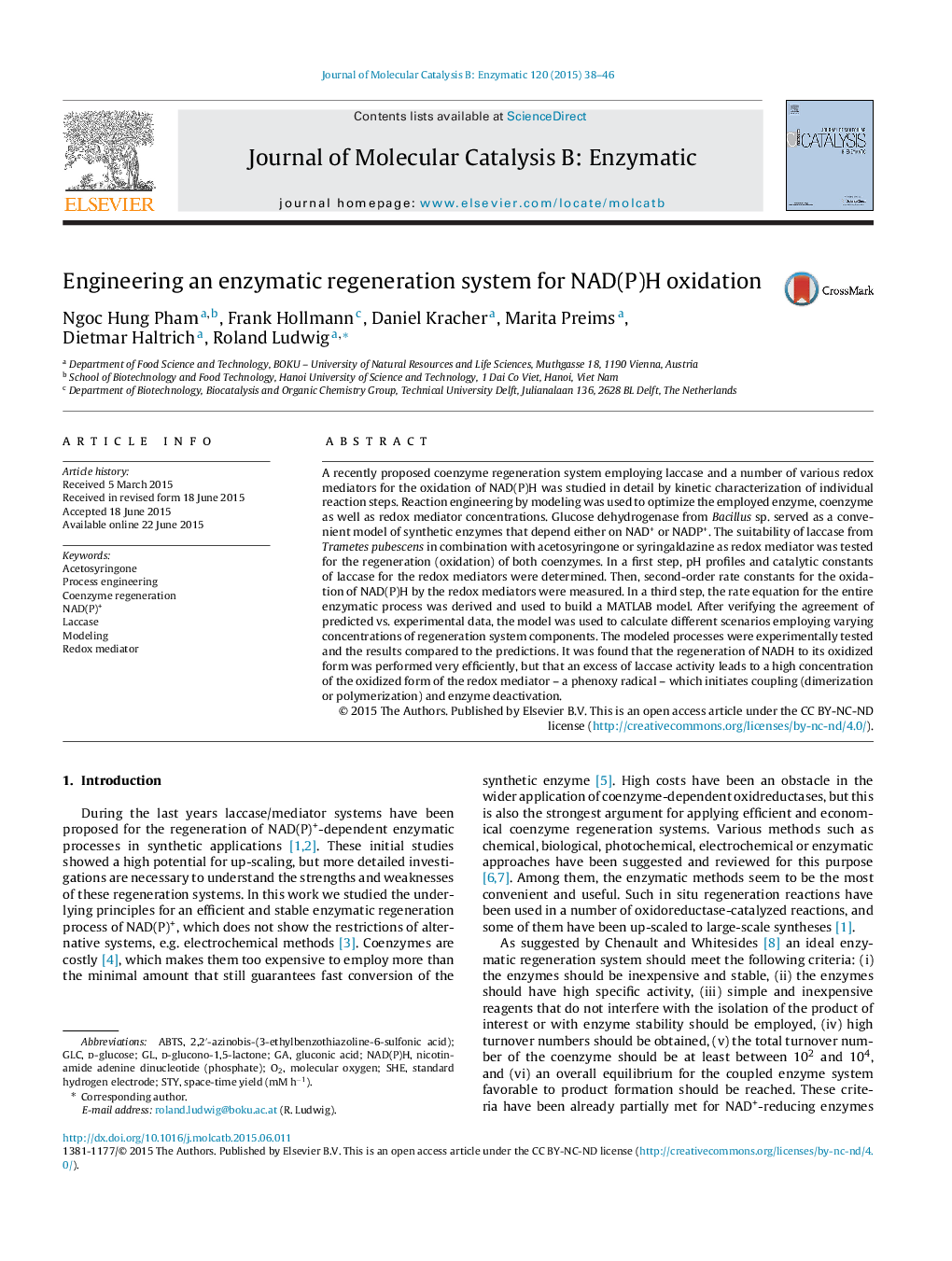| Article ID | Journal | Published Year | Pages | File Type |
|---|---|---|---|---|
| 6531053 | Journal of Molecular Catalysis B: Enzymatic | 2015 | 9 Pages |
Abstract
A recently proposed coenzyme regeneration system employing laccase and a number of various redox mediators for the oxidation of NAD(P)H was studied in detail by kinetic characterization of individual reaction steps. Reaction engineering by modeling was used to optimize the employed enzyme, coenzyme as well as redox mediator concentrations. Glucose dehydrogenase from Bacillus sp. served as a convenient model of synthetic enzymes that depend either on NAD+ or NADP+. The suitability of laccase from Trametes pubescens in combination with acetosyringone or syringaldazine as redox mediator was tested for the regeneration (oxidation) of both coenzymes. In a first step, pH profiles and catalytic constants of laccase for the redox mediators were determined. Then, second-order rate constants for the oxidation of NAD(P)H by the redox mediators were measured. In a third step, the rate equation for the entire enzymatic process was derived and used to build a MATLAB model. After verifying the agreement of predicted vs. experimental data, the model was used to calculate different scenarios employing varying concentrations of regeneration system components. The modeled processes were experimentally tested and the results compared to the predictions. It was found that the regeneration of NADH to its oxidized form was performed very efficiently, but that an excess of laccase activity leads to a high concentration of the oxidized form of the redox mediator - a phenoxy radical - which initiates coupling (dimerization or polymerization) and enzyme deactivation.
Keywords
Related Topics
Physical Sciences and Engineering
Chemical Engineering
Catalysis
Authors
Ngoc Hung Pham, Frank Hollmann, Daniel Kracher, Marita Preims, Dietmar Haltrich, Roland Ludwig,
